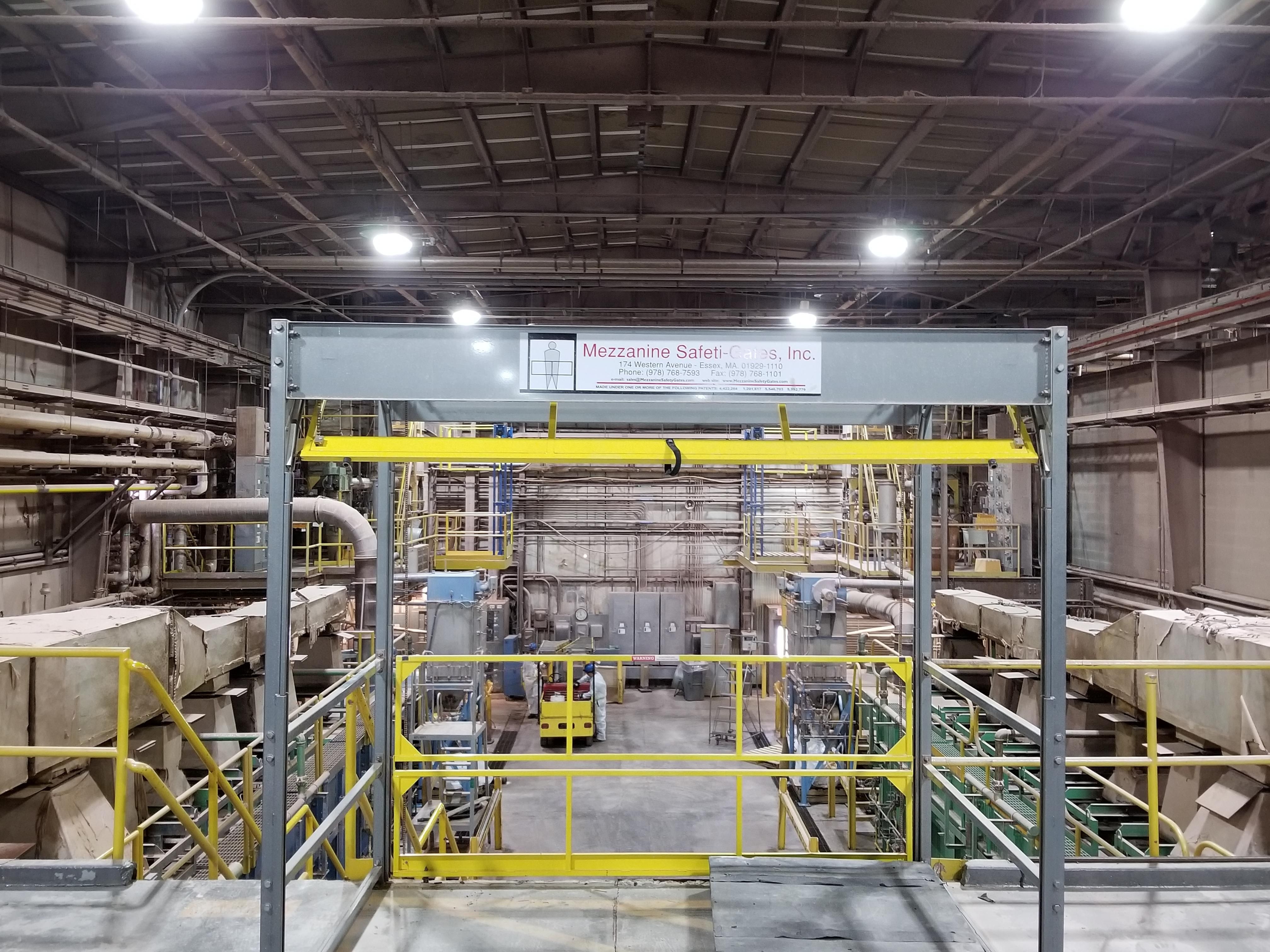
Chemical Production Facility Improves Plant Safety
A worldwide chemical company audits each of its production sites every few years. As part of the audits, a survey of safety and operations is conducted. In the spring of 2017, one of the facilities was audited, and the plant production manager learned that the company was mandating safety gates to replace the access gates on upper level decking to improve safety.
The company’s production buildings have mezzanines approximately 13 feet above ground level. All of the mezzanines had access gates that were either hinged or slide in and out of place to allow raw material, maintenance equipment and tools to be passed to and from ground level. The gates were constantly being opened and closed, but did not offer a safe scenario for employees on the mezzanine level.
The plant created a three-person team to determine the best safety gates for the facility. Each team member did independent research, and unanimously selected MHI member Mezzanine Safeti-Gates due to the variety of the designs offered and the quality of the product.
A representative from Mezzanine Safeti-Gates visited the facility, and worked with the plant to identify 35 areas that needed safety gates within the facility. Its team was tasked with securing each area with dual-gate safety systems to ensure a barrier is in place at all times, even while pallets are in the process of being loaded, unloaded and staged. These dual-gate systems would replace the access gates being used throughout the facility.
Because each area in the facility had its own unique process and space limitations, specific fall protection solutions were designed for each area.
The facility featured a number of areas in which overhead hoists that loaded super sacks to elevated areas so employees could mix the ingredients into the hoppers. The Open Top safety gate model was the fall protection solution for areas using hoists because this design uses an interconnected dual-gate system without any overhead mechanics that ensures one gate is always protecting the employees from the mezzanine ledge. The hoist accesses the area from above while keeping the employee a safe distance from the ledge. A few of the areas using an overhead hoist required side access to the material, so the Open Top model was designed in a ninety-degree configuration.
The Tri-Side model was used to secure other pallet drop areas in the facility that were loaded by a lift truck, but had limited depth due to the location of the hoppers. This model uses a cantilevered rear-side gate that lifts up and out of the way to allow access around the pallet in tight environments while always keeping the ledge secured.
In other locations, the depth of the safety gates had to be able to accommodate a small two-man scissor lift. In these areas, longer side rails for the Tri-Side gates were supplied to fit the depth requirements while keeping employees safe from the exposed ledge.
Additional pallet drop areas needed to be secured, and those had limited height with tall pallet loads. A custom designed version of the Pivot safety gate was created by adjusting the pivot point locations to fit the space constraints and accommodate the pallet sizes.
After the installation of the safety gates, the employees in the facility are very happy with the ease of use of the gates and the safety they provided.